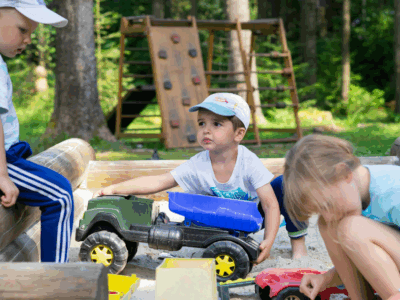I remember when cellphones were thick bricks that you kept in case of dire emergencies. Now, almost two decades later, cellphones are so mainstream that our whole lives, at times, seem to revolve around them. This means that you as a parent now have to come up with a plan (that you and your partner agree upon) for how to best handle phones + children.
Talk about overwhelming! You have to think about screen time, access, and when your child should get a phone of their own. If you’re struggling with this, no worries mama. We rounded up a few important things to consider while you figure out your family’s game plan.
Always Supervised
When they’re young, it’s important that phone time be supervised. This allows you to see what they’re doing and encourage good behavior. Think of it like an outing: you wouldn’t want them to go out by themselves, would you?
Sometimes, this means being on high alert, which takes a bit of vigilance. Kids are always learning about new sites and apps from friends, so be on the lookout for anything that you may not have sanctioned.
Very limited access – apps, browsers, etc.
Phones are increasingly friendly to parental restrictions. Take the time to explore the available options and choose what might be best for you and your family.
If your child is using your phone, consider adjusting a number of your security settings to limit what they have access to. You can adjust the amount of time the phone can be in use and what content they can access.
Connecting with non-local relatives
This is one of the best uses we’ve found for cell phones. FaceTiming and other forms of video chats can help to bridge the divide and to ensure all your friends and family can be an important part of your child’s life regardless of physical location.
Educational Programming
Encourage your child to put that phone to a more productive use by preloading it with educational games and apps. This allows them the opportunity to exercise a bit of choice in how they’re passing their free time but ensures they’re still doing something productive with their screen time.
There are so many great free apps to consider to start. We love Fish School, which includes games focused on letters, numbers, shapes and colors. PBS offers several great apps — especially their Games and Video apps which linked to their popular educational programming. Toddler Puzzle is another fun one – allowing your toddler to color in a photo before it’s turned into a simple puzzle.
When should your child have a phone?
Worried as to when your kid should get their own phone? If you have younger kids, fear not. You have some time to decide your approach. The average age at which children receive their own phone is between the ages of ten and twelve. Ultimately, though, this is one of those decisions which you and your partner will need to make collectively well in advance.
If you’re anxious about your child going without a cellphone, an intermediate solve some parents have opted for is a simple flip phone! This type of phone works great for basic communication without the distracting bells and whistles of a smartphone.
Model Behavior
Finally, you should make every attempt to limit your own screen time in front of them.
Kids mimic so much. They hear the things we say and they see the interest we have and they internalize. This is great for development! But can also be tricky when it comes to bad habits.
If we are constantly looking at or interacting with our phones, it’s logical that our kids are going to see our phones as an interesting and important part of life, too. So it’s extra extra extra important that we set the example for them early on. It’s an essential part of our role as parents to help them learn how to navigate our current, constantly-changing digital-centric world.



